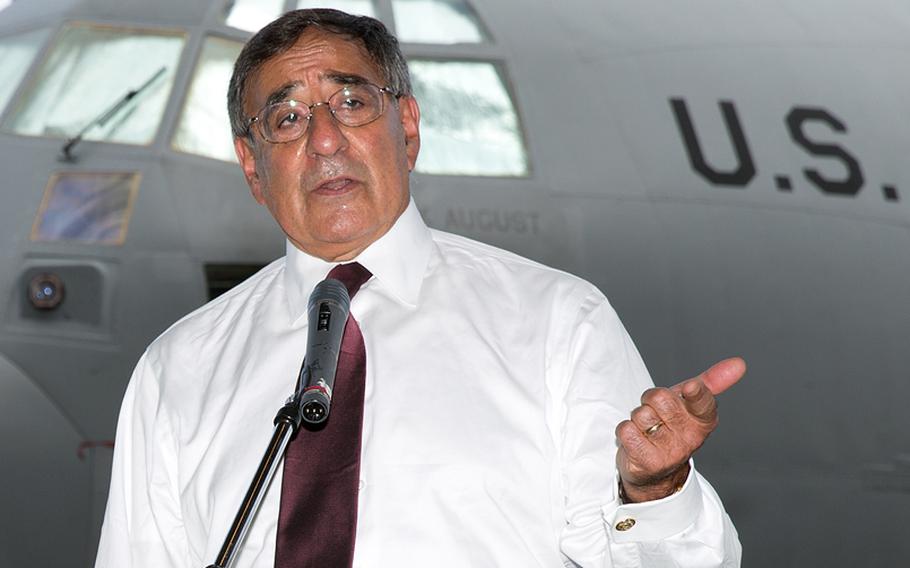
Secretary of Defense Leon E. Panetta addresses U.S. servicemembers at Yokota Air Base, Japan, on Monday Sept. 17, 2012. His trip to Asia included stops in China and New Zealand. (Yasuo Osakabe/Defense Department)
AUCKLAND, New Zealand — The United States will begin allowing New Zealand warships to dock at U.S. ports for the first time in decades, Secretary of Defense Leon Panetta said Friday.The Pentagon is hailing the first visit to the South Pacific island nation by a U.S. defense secretary in 30 years as the latest sign of warming relations after strains since the 1980s over nuclear policy. New Zealand bars nuclear-powered ships and submarines from its ports, and the U.S. “one-fleet” policy effectively prevents visits by other U.S. Navy or Coast Guard vessels.But another part of U.S. policy that prevented Royal New Zealand Navy ships from visiting U.S. military ports has been modified so the defense secretary can now allow port visits on a case-by-case basis. The two countries are still not officially allies, but Panetta said the U.S. is committed to building closer military ties with New Zealand, a country he called “a true friend.”“While we acknowledge that our countries continue to have differences of opinion in some limited areas, today we have affirmed that we are embarking on a new course in our relationship that will not let those differences stand in the way of greater engagement on security issues,” Panetta told a news conference.The United States has also eased rules limiting contacts between defense officials planning joint military exercises, Panetta said.The two countries have signed two mutual declarations since 2010 to lay the groundwork for closer diplomatic and military ties. New Zealand has partnered with the U.S. and NATO in Afghanistan, where 10 of its troops have been killed, including five in August.In meetings Friday with New Zealand officials, Panetta thanked them for Kiwi efforts in Afghanistan. He also laid a wreath at a veterans memorial in Auckland.Panetta, who met with leaders of Japan and China earlier in the trip, also discussed New Zealand’s role in the U.S. “rebalance” strategy, which names the Asia-Pacific as the top focus of future U.S. diplomatic, military and economic efforts.“I thoroughly welcome renewed U.S. focus in our part of the world,” New Zealand Defense Minister Jonathan Coleman told a joint news conference with Panetta.But neither Coleman nor Panetta indicated they sought to revive a U.S.-New Zealand mutual defense treaty that both countries pulled out of in the 1980s over the nuclear issue.“I don’t think we should get hung up trying to turn the clock back to pre-1986,” Coleman said.New Zealand will not be welcoming nuclear-powered vessels in its ports, he added, a position he said Washington accepts.Panetta was noncommittal on a New Zealand invitation to send a non-nuclear Coast Guard ship to New Zealand. A senior defense official, speaking on the condition of anonymity, said Thursday the United States remains committed to the one-fleet policy.Panetta was greeted Friday at Government House, an official residence where English monarchs stay during visits to New Zealand, with a thunderous Maori war dance called a haka. During the welcome ceremony he did a ceremonial pressing of noses with a Maori woman, a form of greeting.He planned to meet Saturday with Prime Minister John Key before returning to the United States at the end of his eight-day Asia-Pacific trip.